Blog Detail
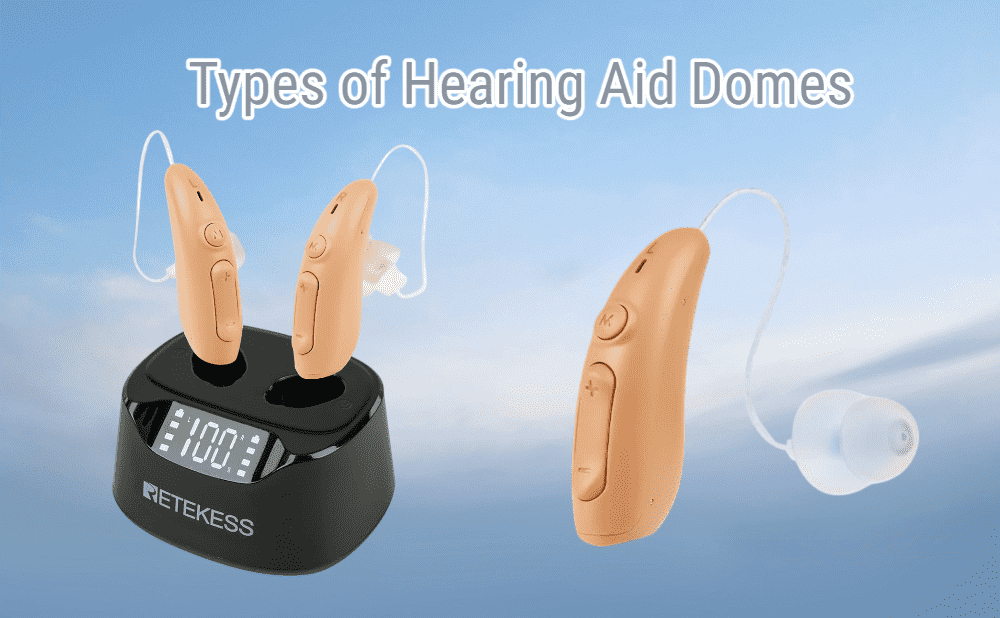
Types of Hearing Aid Domes
- Sophia
- Sep 19, 2025
- 0 Comments
Hearing aid domes are small, removable tips that attach to the receiver of a hearing aid, directing amplified sound into the ear canal. Choosing the right dome is crucial for comfort, sound quality, and feedback reduction. This guide explores the various types of domes—open, closed, power, and tulip—to help you make an informed decision.
Open Domes:
Natural and transparent, suitable for individuals with mild hearing loss
Open domes are typically made of soft silicone or plastic, designed with multiple small holes or vents to allow some external sounds to enter the ear canal. This design enables the wearer to enjoy the amplification provided by the hearing aid while still hearing the surrounding environment, avoiding the feeling of "blocked ears."
Advantages
-
Natural Sound: Since the ear canal is partially open, the wearer can hear more ambient sounds, maintaining good situational awareness.
-
High Comfort: The open design reduces the feeling of ear canal blockage, making it more comfortable for long-term use.
-
Suitable for Mild Hearing Loss: Open domes are particularly suitable for individuals with mild or high-frequency hearing loss, offering a more natural sound amplification effect.
Disadvantages
-
Possible Feedback: Due to the vents, feedback (high-pitched whistling) can occur in high-frequency or noisy environments.
Closed Domes:
The best choice for enhanced sound amplification
Closed domes are usually made from soft silicone or rubber materials. Their design is tighter, completely sealing the ear canal to reduce external sound interference. The smooth surface makes them easy to comfortably insert into the ear.
Advantages
-
Enhanced Bass Sounds: By fully sealing the ear canal, closed domes amplify low-frequency sounds, making the sound fuller and clearer, especially suitable for users with more significant hearing loss.
-
Reduced Feedback: The closed design effectively minimizes the feedback noise, avoiding the whistling sound from the hearing aid.
-
Suitable for Noisy Environments: Closed domes block out external noise, making them ideal for use in noisy settings.
Disadvantages
-
Ear Canal Pressure: The sealed design may create a feeling of pressure in the ear canal, potentially leading to discomfort after long periods of use.
-
Unnatural Sound Perception: Closed domes may cause the wearer’s voice to sound too loud, creating an unnatural auditory experience.
-
Limited Use Range: Closed domes are best for those with moderate to severe hearing loss and may not be suitable for individuals with mild hearing loss or those seeking a more natural sound experience.
Power Domes:
The top choice for maximum sound amplification
Power domes are designed for users with severe to profound hearing loss. They typically have a tighter design to fully seal the ear canal and maximize sound amplification. Power domes are used by individuals who need a significant increase in volume.
Advantages
-
Maximum Sound Amplification: Power domes provide the strongest amplification, making them suitable for users with severe or profound hearing loss.
-
Effective Noise Leakage Prevention: Due to the tight design, sound is not leaked, ensuring maximum sound transmission.
-
Reduces Feedback and Noise Interference: The powerful sealing design effectively reduces external noise and feedback.
Disadvantages
-
Ear Canal Pressure: The tight design of power domes can cause a feeling of pressure in the ear canal during long-term use, making them unsuitable for prolonged wear.
- Not Suitable for Mild Hearing Loss: For individuals with mild hearing loss, power domes may over-amplify the sound, negatively affecting the hearing experience.
Tulip Domes:
Combining the benefits of both open and closed designs
Tulip domes combine the characteristics of both open and closed designs. They feature a small hole at the top to allow natural sounds to enter the ear, while the bottom is sealed to enhance low-frequency sound transmission. This design allows the wearer to enjoy the amplification of the hearing aid while still perceiving the natural external sounds, avoiding the feeling of "blocked ears."
Advantages
-
Enhanced Speech Clarity: With its semi-open design, tulip domes provide sufficient amplification while minimizing feedback and echo, especially suitable for users with moderate hearing loss.
-
Comfortable Wearing Experience: Compared to fully closed domes, tulip domes reduce the feeling of ear canal blockage and are less likely to cause discomfort during long-term use.
-
Strong Adaptability: This design fits various ear canal shapes, making it especially suitable for users who feel uncomfortable with other types of ear domes.
Disadvantages
-
Suitable Range: Tulip domes are more appropriate for users with moderate hearing loss. For severe or profound hearing loss, power domes may be necessary for stronger sound amplification.
Comparing Tulip Domes with Other Models
| Dome Type | Best For | Pros | Cons |
|---|---|---|---|
| Tulip Domes | Mild to moderate hearing loss | Secure fit, reduces feedback, enhances clarity | May feel more intrusive due to deeper insertion |
| Open Domes | Mild hearing loss | Natural sound experience, less occlusion | May cause feedback in noisy environments |
| Closed Domes | Moderate to severe hearing loss | Enhanced amplification, reduces feedback | Can cause occlusion effect |
| Power Domes | Severe hearing loss | Maximum amplification, tight seal | May feel uncomfortable, increased occlusion |
Selection and Maintenance Suggestions:
How to Choose the Right Ear Domes
-
Degree of Hearing Loss: Open domes are suitable for mild hearing loss; tulip domes for moderate hearing loss; and power domes for severe or profound hearing loss.
-
Comfort: The wearer should feel comfortable without any pressure.
-
Environmental Adaptability: In noisy environments, closed or power domes can effectively isolate noise; in quiet environments, open domes allow for more natural sound perception.
Maintenance and Care
-
Regular Cleaning: Use a soft dry cloth to regularly wipe the ear domes, preventing earwax buildup from affecting sound quality.
-
Avoid Moisture: Avoid soaking the ear domes in water, as moisture may damage the hearing aid's sensitive components.
-
Check for Wear: Regularly check for cracks or hardening in the ear domes and replace them promptly when necessary.

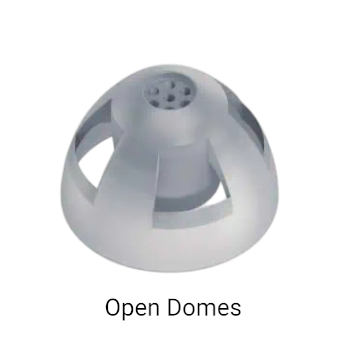
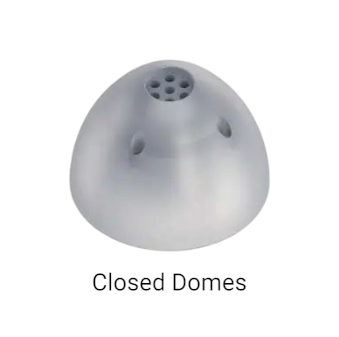
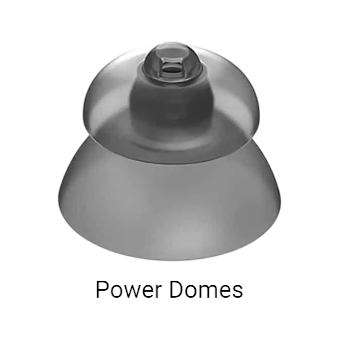
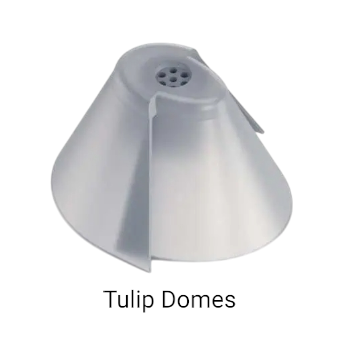

Comments (0)